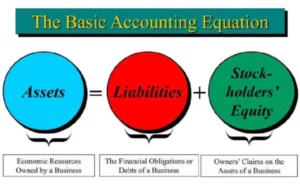Content

A “medium probability” contingency is one that satisfies either, but not both, of the parameters of a high probability contingency. These liabilities must be disclosed in the footnotes of the financial statements if either of the two criteria is true. The level of impact also depends on how financially sound the company is.

The https://www.bookstime.com/ principle established by the Standard is that a provision should be recognised only when there is a liability i.e. a present obligation resulting from past events. Contingent liabilities are recorded if the contingency is likely and the amount of the liability can be reasonably estimated. The liability may be disclosed in a footnote on the financial statements unless both conditions are not met. Similar to the concept of a contingent liability is the concept of a contingent asset. A contingent asset is a possible asset that arises from past events and whose existence will be confirmed only by the occurrence or non-occurrence of one or more uncertain future events not wholly within the control of the entity. Like a contingent liability, a contingent asset is simply disclosed rather than a double entry being recorded.
The Materiality Principle
Sometimes companies are unclear when they’re required to report a contingent liability on their financial statements under U.S. So far, all the items considered in this article have involved the provision being recorded as a liability with the debit being shown as an expense in the statement of profit or loss. The exception to this is if an entity creates an obligation for future costs due to the construction of a non-current asset. In this case, the provision should be included within the original cost of the asset, as this is directly attributable to the construction of that asset. A contingent liability is recorded in the accounting records if the contingency is probable and the related amount can be estimated with a reasonable level of accuracy. Other examples include guarantees on debts, liquidated damages, outstanding lawsuits, and government probes.
In the opinion of contingent liabilities, the disposition of these matters is not expected to have a material adverse effect on the Group’s business, consolidated financial position or results of operations. Let us see the example where a person has purchased a motorcycle from a showroom and has a two-year warranty for the engine and the motorcycle.
Incorporating Contingent Liabilities in a Financial Model
An SEC enforcement action announced today highlights a continuing focus on timely disclosure of contingent liabilities. The SEC’s order in In the Matter of Healthcare Services Group, Inc. found that HSG improperly delayed recording or disclosing anticipated losses in pending litigation. The SEC noted that the case resulted from its EPS Initiative, in which the agency deploys data analytics to search for indicators of improper earnings management. The SEC also charged HSG’s CFO, for deciding not to record the loss contingency, and the company’s controller, for a separate series of violations involving improper reductions in other expenses. The parties settled without admitting or denying the SEC’s findings, and HSG agreed to pay a $6 million civil penalty. Contingent liabilities reflect amounts that your business might owe if a specific “triggering” event happens in the future.
How do companies account for contingent liabilities?
Companies account for contingent liabilities by recording a provision in their Financial Statements. The amount of the provision is based on the best estimate of the amount that the company will ultimately be required to pay.
As the double entry for a provision is to debit an expense and credit the liability, this would potentially reduce profit to $10m. Then in the next year, the chief accountant could reverse this provision, by debiting the liability and crediting the statement of profit or loss. This is effectively an attempt to move $3m profit from the current year into the next financial year.
Example of Contingent Liability
Likewise, a note is required when it is probable a loss has occurred but the amount simply cannot be estimated. Normally, accounting tends to be very conservative , but this is not the case for contingent liabilities. Therefore, one should carefully read the notes to the financial statements before investing or loaning money to a company. A contingent liability is a potential obligation that may arise from an event that has not yet occurred. A contingent liability is not recognized in a company’s financial statements. Instead, only disclose the existence of the contingent liability, unless the possibility of payment is remote. There are three possible scenarios for contingent liabilities, all of which involve different accounting transactions.
- For example, a company might be involved in a legal dispute that could result in the payment of a settlement based on a verdict reached in a court.
- Contingent liabilities also include obligations that are not recognised because their amount cannot be measured reliably or because settlement is not probable.
- The company agrees to guarantee that the supplier’s bank loan will be repaid.
- General business risks include the risk of war, storms, and the like that are presumed to be an unfortunate part of life for which no specific accounting can be made in advance.
- On May 16, 2012, the Frankfurt/Main Higher Regional Court had ruled that there were no material errors in Deutsche Telekom AG’s prospectus.
- A contingent liability is a potential liability that may occur in the future, such as pending lawsuits or honoring product warranties.
This is an example of a contingent liability that may or may not materialize in the future. On the other hand, if it is only reasonably possible that the contingent liability will become a real liability, then a note to the financial statements is required.